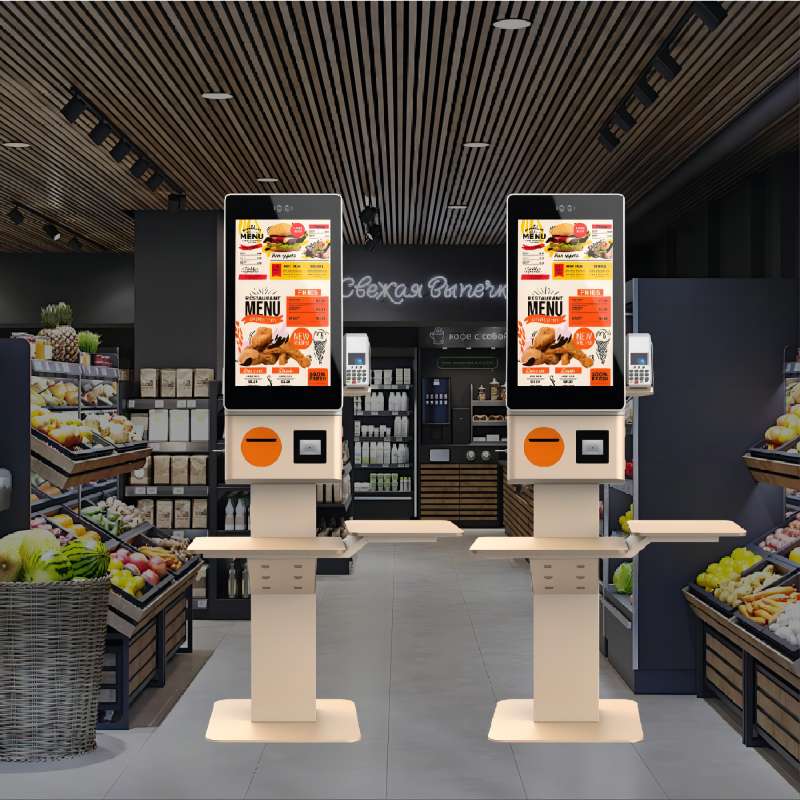A self-ordering kiosk is a user interface technology that allows customers to independently place orders and complete transactions without the need for direct interaction with a cashier or server. These kiosks are typically touchscreen devices placed in restaurants, retail stores, or other service-oriented businesses. Here’s a breakdown of its components and solutions:

Touchscreen Interface: Users interact with the kiosk through a touchscreen display, which is intuitive and easy to use.
Menu Navigation: The interface presents the menu items in a clear and organized manner, often with categories and images to assist users in making selections.
Customization Options: Depending on the business, kiosks may allow customers to customize their orders (e.g., burger toppings, pizza ingredients).
Order Management: Once an order is placed, it is transmitted to the kitchen or service area electronically, reducing the chance of errors from manual order taking.
Payment Integration: Kiosks often integrate payment options, allowing customers to pay with credit/debit cards, mobile payments, or cash.
Language Options: To cater to diverse customer bases, kiosks may support multiple languages for ease of use.
Accessibility Features: Considerations for accessibility, such as adjustable height for wheelchair users and options for visually impaired customers (e.g., audio instructions).
User Interface Design: The design should be intuitive and user-friendly, with clear navigation and minimal steps required to complete an order.
Hardware Reliability: Ensuring that the touchscreen and other hardware components are durable and resistant to wear and tear from frequent use.
Integration with POS Systems: Seamless integration with Point-of-Sale (POS) systems ensures accurate order processing and inventory management.
Security Measures: Robust security protocols to protect customer payment information and prevent unauthorized access to the kiosk system.
Maintenance and Support: Regular maintenance and quick support services to address any technical issues promptly.
Analytics and Reporting: Capabilities to gather data on customer preferences and ordering patterns, which can inform business decisions and marketing strategies.
Customer Feedback Mechanism: Integration of feedback options to gather insights and continuously improve the ordering experience.
· Efficiency: Faster order processing and reduced wait times, leading to higher customer satisfaction.
· Accuracy: Minimizes errors in order taking and customization, enhancing order accuracy.
· Customer Empowerment: Gives customers more control over their ordering process and customization options.
· Cost Savings: Potentially reduces labor costs by decreasing the need for cashier roles, particularly in high-volume environments.
· Initial Cost: Upfront investment in kiosk hardware and software.
· User Adoption: Ensuring customers are comfortable using the kiosks, particularly older or less tech-savvy individuals.
· Maintenance: Regular upkeep and updates to hardware and software.
· Integration Complexity: Ensuring seamless integration with existing POS systems and backend operations.
In conclusion, a well-designed self-ordering kiosk enhances customer experience, improves operational efficiency, and can contribute to cost savings for businesses. However, careful planning, user-centric design, and ongoing support are crucial for successful implementation and utilization.